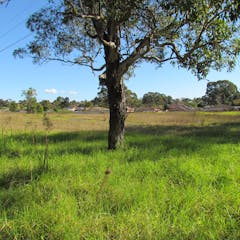
Articles on Green space
Displaying 41 - 60 of 78 articles

Research shows that access to urban green space makes people and neighborhoods healthier. But parks can’t work their magic if their design ignores the needs of nearby communities.

Green spaces can help to address loneliness. But they are highly vulnerable to austerity.

Parks should service a variety of needs, not just cater to one group of people.

Australian cities are experiencing the third big wave of growth in their history. The response in the past was planning and investment in green infrastructure, and it’s time to do the same again.

For a public space to be seen as safe, welcoming and accessible, a diverse range of people need to actively use it. That’s why any space-changing project needs to engage broadly with the community.

As ‘Heart Month’ kicks off across North America, a cardiovascular researcher explains how the neighbourhood you live in can affect your risks of heart disease.

Residents often have concerns about informal green space but some still use it. Work to enhance these areas should aim to resolve these concerns without destroying what residents do value.

Faecal transplants and virtual nature are technological solutions to ‘nature deficit disorder’ from urban living. Such ‘quick fixes’ offer some benefits, but are no substitute for the real thing.

Tree plantings are making a visible difference to Melbourne’s west. It’s the result of a collaborative model of greening, one that Australian cities need to apply more widely.

A new study shows major Australian cities are suffering an overall loss of green space –
although some areas are doing better than others.

Drains take up precious but inaccessible open space in our cities. Converting these to living streams running through the suburbs could make for healthier places in multiple ways.

Successful parks and urban green spaces encourage us to linger, to rest, to walk for longer. That, in turn, provides the time to maximise the restorative mental benefits.

Being crowded into poor-quality high-density units harms residents’ health, but design features that are known to promote wellbeing can make a big difference to the lives of low-income households.

Australians are losing the backyards that once served as retreats from the stresses of city living. Our health is likely to suffer as cities become less green and much hotter.

New research shows many good intentions for creating urban environments that promote good health were not carried through. The solutions start with engaging more closely with residents themselves.

Urban green spaces are most effective at delivering their full range of health, social and environmental benefits when physical improvement of the space is coupled with social engagement.

In a world of increasing urbanisation, density, pressure and, some say, isolation, there’s a natural salve for stress, pressure and mental illness. And it’s right above our heads.

Greening cities that are becoming denser is a major challenge. City-dwellers’ health benefits from both well-designed green spaces and urban density, so we must manage the tensions between them.

Urban bushland has health benefits beyond being a great place to go for a walk. Planners need to consider these when making decisions about the future of our cities.

Several key aspects of public open space can encourage older people to get out and about. And badly designed and maintained facilities have the opposite effect and can harm their wellbeing.





